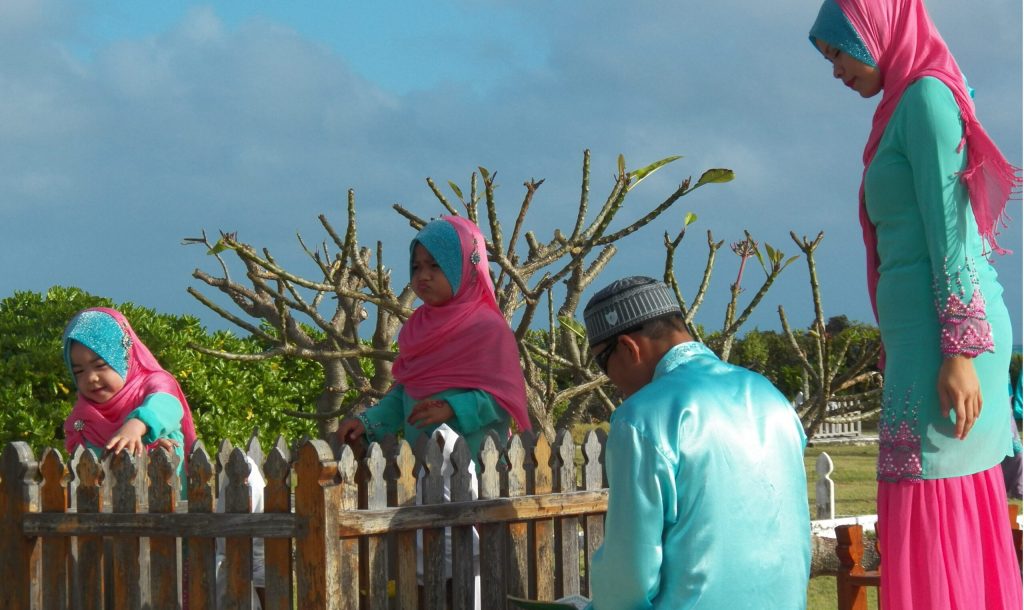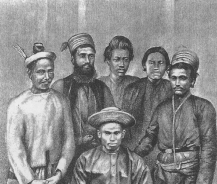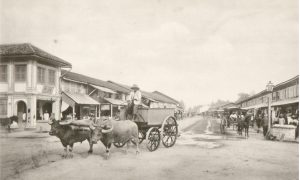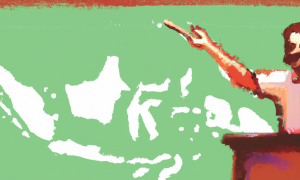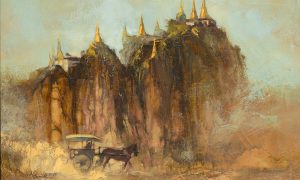Australia’s “History Wars” of the 1990s were marked by a public debate between proponents of contrasting ways of understanding Australia’s past. But our figuring of history should not be limited to two opposing positions. Focusing on centuries of diverse cultural interactions in our coastal North offers a broader view. It enables us to recognise Australia’s multicultural history, a history that predates the voyages of Cook and the settlement at Sydney Cove.
In what follows, we will adopt a multicultural view to understand the Cocos Malays of the Cocos (Keeling) Islands. This small island community wishes to maintain their traditional practices and has made claims for Indigenous status. Their historic cemetery contains some Christian tombstones of the former ruling family as well as graves of their own Muslim ancestors. Indeed, they continue to use this cemetery to this day, where they maintain their uniquely Southeast Asian and Muslim traditions. They gather at this graveyard to perform crucial rituals. We see these practices as a lens through which to better understand Australia’s broader multicultural history and heritage.
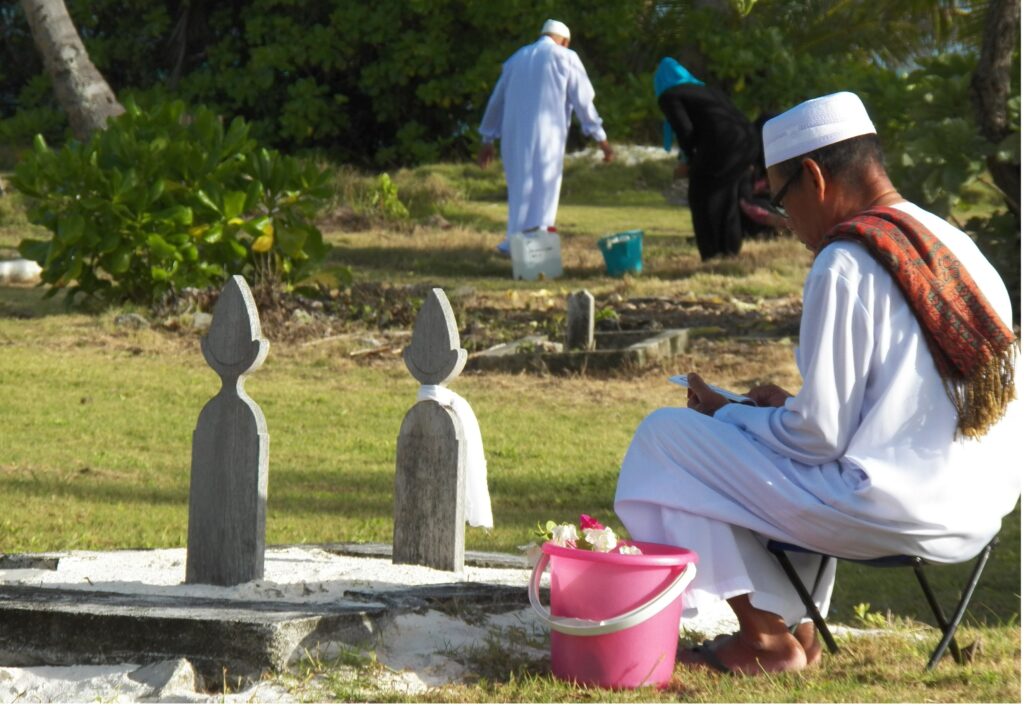
Figure 2. Praying at the grave of a man
Turning Australia’s map upside down
Prior to the 1990s, public awareness of Australia’s history had largely focused on the exploits of European explorers and settlers. But thanks to the efforts of a number of historians, Australians became increasingly aware of the destruction and suffering, as well as the struggle and resistance, of Indigenous Australians. This valuable new direction sparked a public debate known as Australia’s “History Wars”. The topic of Australia’s past now became a pressing social and political matter.
Unfortunately, the public debate in the ensuing three decades has, at times, fallen into simplistic dichotomies of Black and White and who was “good” or “bad”. To create a better understanding of Australia’s multicultural history, we need to go past these dichotomies. One clear way forward is to focus on our Asian and Pacific histories of our coastal north.
This new vista on Australia’s past has been neatly described as “turning the map upside down”—in doing so locating the beginning of Australia’s human history in the north. This began with the arrival of Indigenous Australians more than 60,000 years ago, when they came from the north to inhabit what was then a larger Australian landmass. But as historian Regina Ganter explains, less well known are our Asian and Pacific histories.
These histories began with groundbreaking publications of the 1970s. The edited volume Bridge and Barrier (1972) focused on island peoples in the Torres Strait, showing how they provided a crucial link in an extensive trade network incorporating northern Australia and New Guinea. This link belies the idea that Australia was an isolated continent before
Why riots in Wales in June 1919 are a useful resource for appreciating histories of Malay identity beyond the violence of 13 May 1969.
1919, 1969, and memories of Malay cosmopolitanism
At the outbreak of WWII, from the Cocos (Keeling) Islands to Christmas Island, Broome, Derby, Wyndham, Darwin, Cooktown, and on to Cairns, diverse communities could be found with Indigenous, Asian, and/or European people. These resulted from a history of mixed relations in the coastal north. But our multicultural history has been partly obscured while the public has debated over the roles of Indigenous versus European.
What is most exciting about our multicultural history is that we can point to a rich, ongoing heritage. “Heritage” traditionally refers to something we inherit from our past and want to keep for future generations. But as we show, heritage can be even more than that. It can be something that is relevant for local communities, and also for all Australians, because heritage relates to who we are. It can also be about our practices which connect us to the places around us.
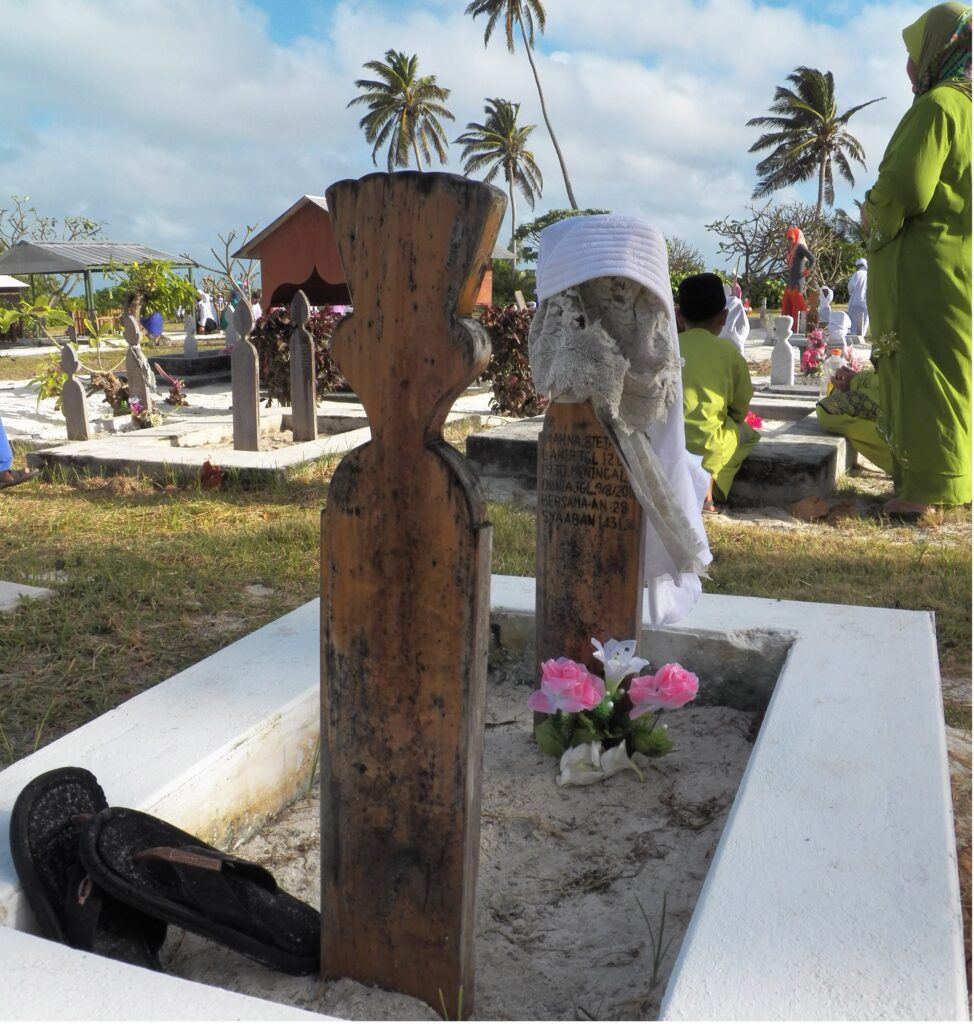
Figure 3. A woman’s grave adorned with sandals and flowers.
Our research site: Home Island
The Cocos (Keeling) Islands are part of Australia’s Indian Ocean territories. They consist of two atolls as island groups. North Keeling Island is an uninhabited designated national park. 27 kms to the south lie the Cocos Islands. They are comprised of 27 or so islands on the main atoll, only two of which are inhabited. On West Island live around 200 “expatriate” Australians, mostly teachers, technicians, other government employees, and their families.
Around 400 Cocos Malays live on Home Island. They could be considered Australia’s oldest continuous Muslim community—indeed, they recently pushed for Indigenous status. And although they are Australian citizens, their early history is closely tied up with Southeast Asia’s past. It seems their ancestors first came together in Singapore, Borneo, and Java in the early 1800s. They were the slaves of a trader named Alexander Hare, who took them, via South Africa, to the Cocos Islands in 1826. (For context, that was prior to the formation of European settlements in Melbourne, Adelaide, and Perth.)
Hare was promptly ousted by another adventurer, John Clunies-Ross. In 1831, Clunies-Ross took over the islands and their Malay inhabitants for himself and 4 succeeding generations of his family. In 1955, the Cocos Islands became an Australian territory. After this, the Australian government bought out most of the Clunies-Ross land in 1978. Under a UN-supervised vote of self-determination in 1984, the Cocos Malays voted to fully integrate with Australia. Since that time, the Cocos Malays have adopted and adapted their Muslim and Malay traditions, customs, and heritage as part of a diverse Australia. And, as we will show here, their cemetery not only plays a crucial role in contemporary religious life but also pays testament to their long multicultural history.
Pulu Gangsa cemetery
Cemeteries in Australia, being the final resting places for people of many backgrounds, serve as unique spaces where we can observe an array of cultural rituals and beliefs. A striking example of this cultural tapestry can be found in the history of the cemetery on Home Island, known as Pulu Gangsa. Its origins trace back to around 1900, when this small island to the north of Home Island was established as a burial ground. Following the turmoil of World War II, resourceful locals joined Pulu Gangsa to Home Island with a land bridge that has withstood seven decades of swells, tides, and even cyclones. So, strictly speaking, it is no longer a separate island, but instead could be considered as a peninsula of Home Island.
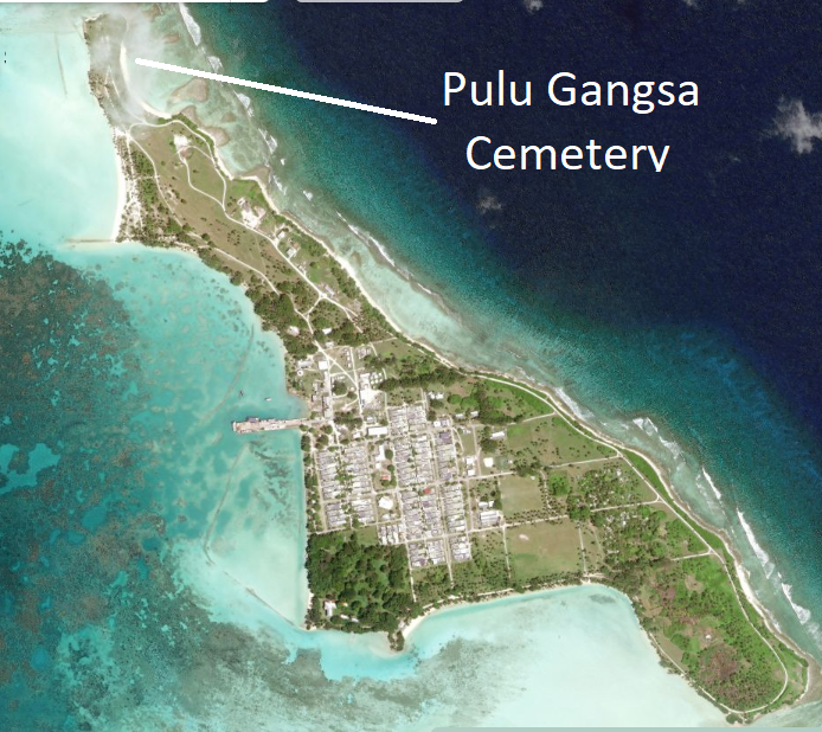
Figure 4. Pulu Gangsa is a peninsula on the north side of Home Island.
Pulu Gangsa cemetery is about the size of a football field. As you walk in, you feel immersed in tranquillity. Aside from your footsteps, the only things you can hear are the rustling of trade winds through the leaves and the distant sound of waves crashing on the reefs. The air carries the sweet fragrance of flowers from the Frangipani trees planted among the graves. Coconut palms line the edges of the grounds, providing shade. Between the palms you can catch glimpses of both the powerful breakers on one side and the serene lagoon on the other.
Within the cemetery, you encounter a collection of wooden and stone grave markers belonging to the Muslim Cocos Malays. Those markers with pointed tops resemble spoons. They are the resting places of men. In contrast, those with flatter or more rounded tops are designated for women. The newer graves are adorned with scarves and are sheltered beneath protective umbrellas. The bereaved often leave offerings, such as bottled water, flowers, and sandals, as tokens of respect for the departed spirits. In times gone by, it was also a tradition to provide the deceased with cigarettes or their favourite food, if that was what they enjoyed in life.
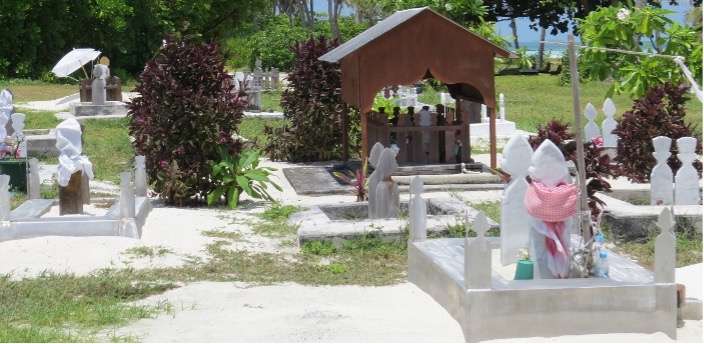
Figure 5. Photo of various graves. At the back left, a white umbrella sits over what appears to be a recent grave. Photo thanks to Marcie Connelly-Lynn.
Adjacent to these markers lie Christian gravestones, the final resting places of certain members of the Clunies-Ross family. You might stumble upon the gravestone for John Sidney Clunies-Ross, the fourth in the lineage of the Clunies-Ross rulers. There is also a memorial for Inin, the first wife of the third Clunies-Ross ruler.
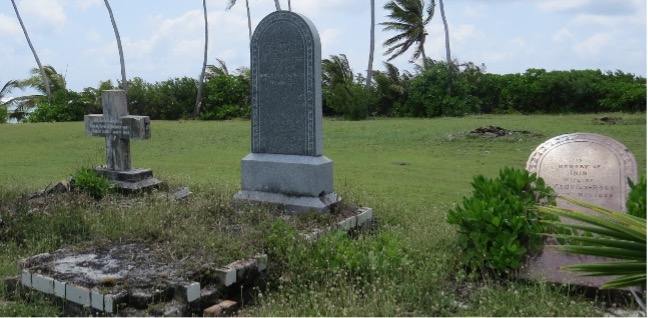
Figure 6. Christian graves of John Sidney and Inin. Photo thanks to Marcie Connelly-Lynn.
With both Muslim and historic Christian graves, the cemetery is part of the Cocos (Keeling) Islands’ cultural heritage. Indeed, it is listed in the Western Australian and Australian Heritage Database. Preserving it is a concern. With rising sea levels, locals are worried that the graves will be washed away. But the graveyard is not just a historical remnant to be safeguarded. It still plays a role in three different kinds of Cocos Malay ritual.
Funerals
The first ritual of Pulu Gangsa cemetery we wish to consider is funerals. When a local Cocos Malay passes away, a dedicated committee assumes the solemn responsibility of conducting the funeral rites. These rites adhere to Islamic and local customs, with one step being the purification of the deceased through a sacred cleansing ceremony known as wudhu. Following this, a payung (“shade” or “umbrella”) is created. This is also sprinkled with water.
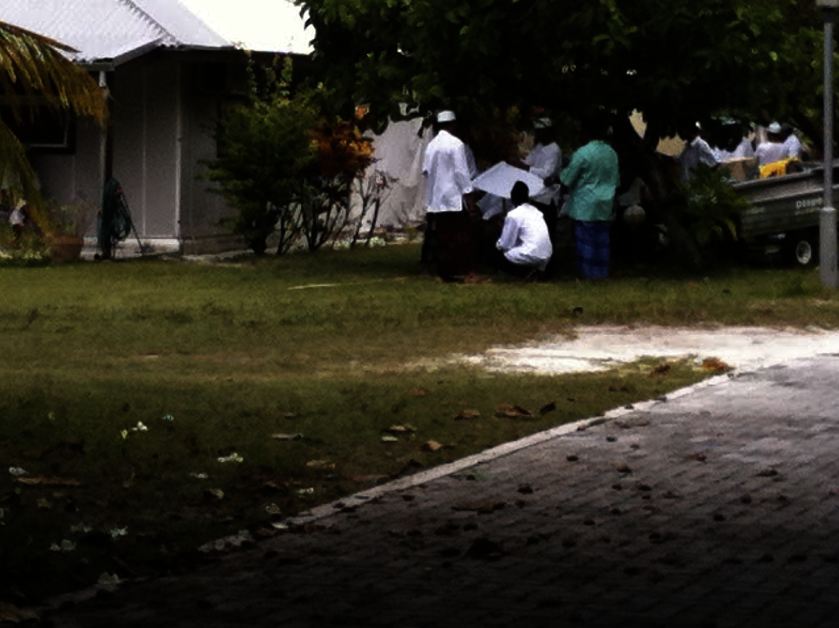
Figure 7. White payung held over the deceased.
The body is then transported to the cemetery. Mourner used to walk the body over; helping to carry it provide religious merit. Nowadays, the body is transported by van and the mourners use the local form of transport, four-wheelers and golf buggies, to take themselves and the body to the cemetery. At the graveside, the mourners recite a prayer for the spirit of the dead. The body, wrapped in a white shroud, is placed in the grave and then covered with soil, in accordance with Islamic practice. So Islamic customs of washing and burying the body are combined with Malay customs like the white umbrella and frangipani trees as well as with local practices such as the offerings at the graves. These provide a poignant tribute to the cultural richness found within the cemetery’s sacred grounds.
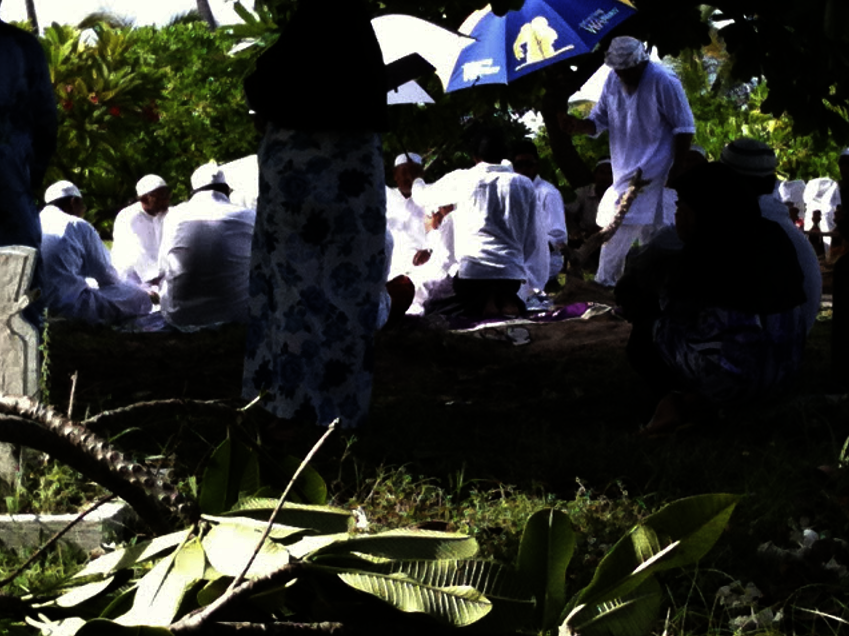
Figure 8. Men, dressed in white, and shading from the heat with umbrellas, perform prayers graveside.
End of the fasting month
Another notable ritual associated with the cemetery occurs at the culmination of the Islamic fasting month, known as Hari Raya Idul Fitri. This sequence of ceremonies signifies the joyous conclusion of fasting and devotion. The term “Hari Raya” translates to “Days of Celebration”, reflecting the festive nature of the event. However, it also serves as a time for contemplation of sombre religious duties and obligations. On the first morning of Hari Raya, the Cocos Malays partake in the tradition known as melawat tanah kubur, which translates to “traveling to visit the graveyard.” Families, in matching outfits, visit the graveyard together to pay respects to the deceased. In 2014, two of the authors (Herriman and Winarnita) observed this ritual, discerning two primary aspects.
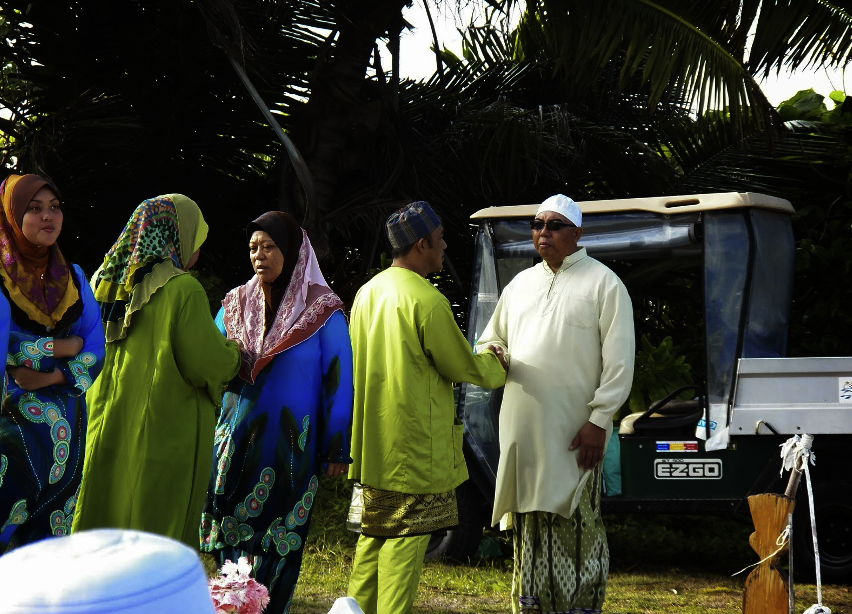
Figure 10. A wife asks forgiveness of another wife, while their husbands do the same.
First is tending to the graves of deceased loved ones. Family members clean the graves, spread flowers and water, and then perform prayers. As Radal Feyrel explains:
we ask forgiveness for the dead and wish that they are put in the right place, which is hopefully heaven [not one of the other worlds between hell and heaven, where] if you’re not a good person, you’ll be stuck. We ask God to forgive them for what they have done. Most people read the Koran. Some people just pray. They bring flowers to decorate the graveyards and water to cool the place. When we were kids, we believed they wore the flowers, drank the water, some people brought cigarettes and lollies, but now there’s not that belief anymore. Now we believe that when you are dead you are gone. Some families still believe that. At the kenduri (ritual meal) they give Coca-Cola if they [the deceased] liked to drink that.
The other major aspect is asking forgiveness. Hari Raya is a time when the wrongdoings to other people of the past year can be forgiven. You can do this at a person’s home but, seeing as they often run into other families tending graves at this time, Cocos Malays also do this at the cemetery. Men greet other men and women other women. This intensely emotional ritual involves fairly formulaic Cocos Malay expressions. One of the authors, Radal Feyrel, for instance, greets male family heads saying something like:
Hari Raya Greetings. Please forgive any of my wrong doings or thoughts. May the food and drink we have shared be acceptable. Please forgive any of my words that were in error or arrogant, harsh, or inappropriate. Hopefully, we will meet again in the future. I hope that God keeps you well and secure. Until we meet again in the coming year. (Selamat Hari Raya, ma’af zahir dan batin. Makan dan minum minta dihalalkan. Kata yang tersilap atau tersalah, atau yang tertinggi, bahasa yang kasar yang tidak enak minta diampunkan. Mudah-mudahan dapat dijumpa lagi lain tahun. Semoga tuhan beri kesehetan dan keselamatan. Sampai jumpa lagi di tahun yang akan datang.)
While making this speech, the theme perform salam which is a kind gentle handshake. Eye contact is limited. While one person speaks, the other nods silently.
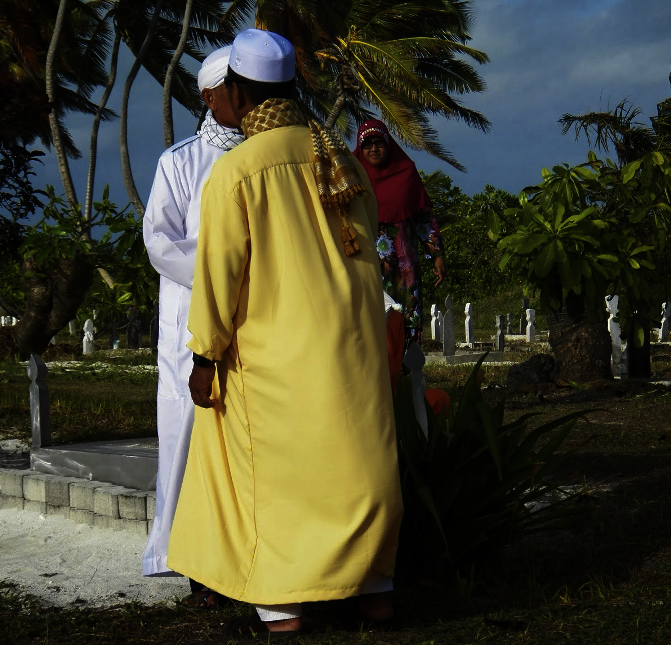
Figure 11. Asking forgiveness.
It is difficult to do justice to the emotional significance of the graveyard rituals. So, instead, we wish to draw attention to several things. The Hari Raya rituals can be found in similar form in most parts of Muslim Southeast Asia. The difference here is that it occurs in Australia, and the graveyard it takes place on points to the Cocos Islands’ rich multicultural history. This multicultural element is also multifaith, as Muslim and Christian graves share the same graveyard. And, finally, ritual is undertaken at what might be considered a sacred heritage site. So it is very much a lived and performed heritage. These are some basic observations that can be gleaned from the Hari Raya graveyard ritual.
Wedding rituals
The final ritual usage of Pulu Gangsa graveyard which we touch upon occurs just before the culmination of wedding ceremonies. Weddings can involve years of planning and months of preparation. For instance, the bride and groom’s families separately put on meals every evening. This all culminates on the Friday and the Saturday of the wedding.
As Radal Feyrel explains, on the Friday, the bride and groom are particularly busy. In the morning, an imam washes off the turmeric that has been applied to whiten the bride and groom’s faces. Then the couple put on ceremonial dress and, accompanied by their family, head over to the graveyard. This is the first time the couple meet each other after being separated for a week. They sit by the graves of family members who have recently passed away. Traditionally, the Cocos Malays asked the spirits in order to have good luck on their wedding day and in their marriage. This is no longer the belief these days. Now Cocos Malays pray for the blessings of Allah to forgive the deceased. They also wish to pay their respects to the deceased because deceased will not be able to attend the wedding. After about half an hour, the bride, groom and their families return to the village. On that night is the nikah, the religious marriage. The following day, Saturday, the festivities begin; these involve a rich variety of music and dance.
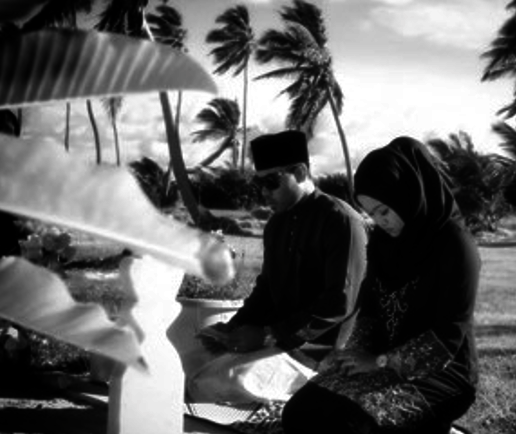
Figure 12. Bride and groom sitting by a grave.
Conclusion
We have observed how the Cocos Malays utilise Pulu Gangsa graveyard in three significant ceremonies: funerals, Hari Raya, and weddings. This graveyard is not simply a relic or a piece of history; it is an enduring aspect of importance for the Cocos Malays, representing what we define as “heritage”. Moreover, it holds significance for all Australians, serving as a tribute to our ongoing multicultural story. The term “multicultural” is subject to debate, but in this context, it is an acknowledgment of cultural diversity beyond the scope of White Australia.
In particular, the idea of “turning the map upside down” provides a radical new vista on coastal locations in our North. The rich heritage associated with the Pulu Gangsa graveyard on Home Island is an example of this. Attending to these kinds of places and practices will enable us to better recognise our multicultural past.
 Facebook
Facebook  Twitter
Twitter  Soundcloud
Soundcloud  Youtube
Youtube  Rss
Rss 